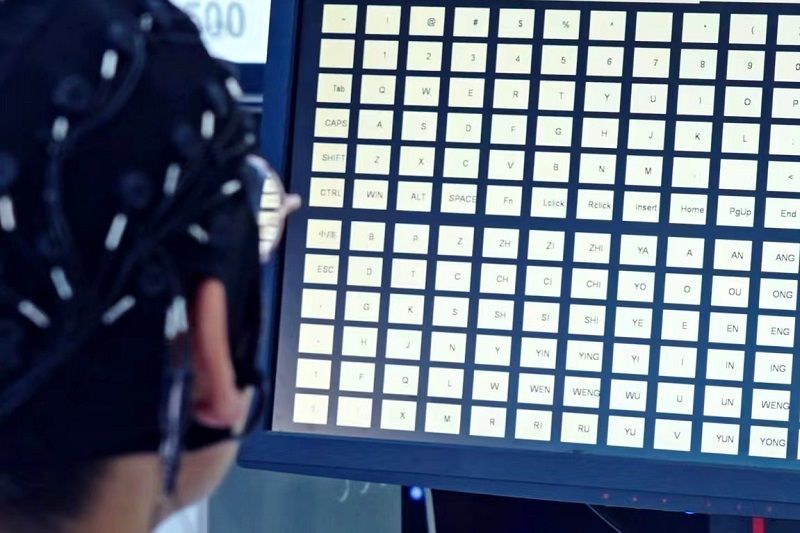TJU Researchers Make New World Record in Non-invasive brain-computer Interface System n
2023-05-18
Science and Technology Daily
Wearing a small device and looking at a virtual keyboard with 216 keys, people can spell and communicate through mind typing at high speed. This "sci-fi" scene became a reality at the 7th World Intelligence Congress held in Tianjin on May 18, 2023.
During the conference, the Brain-Computer Interaction and Human-Machine Fusion Haihe Laboratory officially released an independently developed non-invasive brain-computer interface system with a massively large command set and high-speed rate. The system set a world record for the largest instruction set for a non-invasive brain-computer interface. The technology has been granted patents in China and the United States.

Brain-computer interface technology refers to building a direct connection between the human brain and external devices to allow the brain to "talk" with machines. It is a core technology for the new generation of man-machine interaction and human-machine mixed intelligence. Brain-computer interface technology can be mainly divided into invasive and non-invasive categories. Invasive brain-computer interface technology has safety risks and ethical issues that cannot be ignored, while non-invasive brain-computer interface technology, which is controlled by scalp EEG, is safer, more convenient, faster, and has greater advantages in consumer and industrial applications. Currently, the efficient encoding and decoding of massively large command sets are one of the technical bottlenecks that needs cracking for non-invasive brain-computer interfaces research.
The Brain-Machine Interaction and Human-Machine Fusion Haihei Laboratory developed a new coding paradigm of time-frequency-phase hybrid multiple access, which has successfully integrated three types of EEG characteristics, i.e., motion-induced potential, P300 potential and steady-state visual evoked potential. A high-speed spelling operation with 216 keys was achieved, with an online average information transmission rate of over 300 bits/min and an average single command output time of only 1.2 seconds. The system also integrates commonly used Chinese and English spelling syllable information, supporting one-click switching between Chinese and English input methods to meet the needs of various scenarios for more flexible operations.
"The number of commands is an important indicator of the core ability of non-invasive brain-computer interfaces," said Xu Minpeng, assistant to the laboratory director and professor of neural engineering team at Tianjin University. Eyeing globally, the command set had long been restricted to less than 80 instructions. "The Neural Engineering team at Tianjin University has repeatedly broken world records in this field. In 2019, we were the first to develop a brain-computer interface system with a hundred instruction sets, the world’s largest at that time and realized full-keyboard character input. Later, our team led the league to break through the 200-instruction mark internationally, once again setting a world record."
It is learned that the team has now constructed a domestically produced complete chain non-invasive brain-computer information interaction technology system from chips, electrodes, algorithms, to systems, and its core indicators of EEG recognition accuracy, control command quantity, and information transmission rate have reached the highest international level.
The Brain-Machine Interaction and Human-Machine Fusion Haihe Laboratory is the sixth of its kind supported by Tianjin Municipality government and built by Tianjin University. The laboratory boasts the key technology of non-invasive brain-machine interaction and has laid out the world's largest and most comprehensive patent pool for brain-computer interaction.
By Eva Yin

